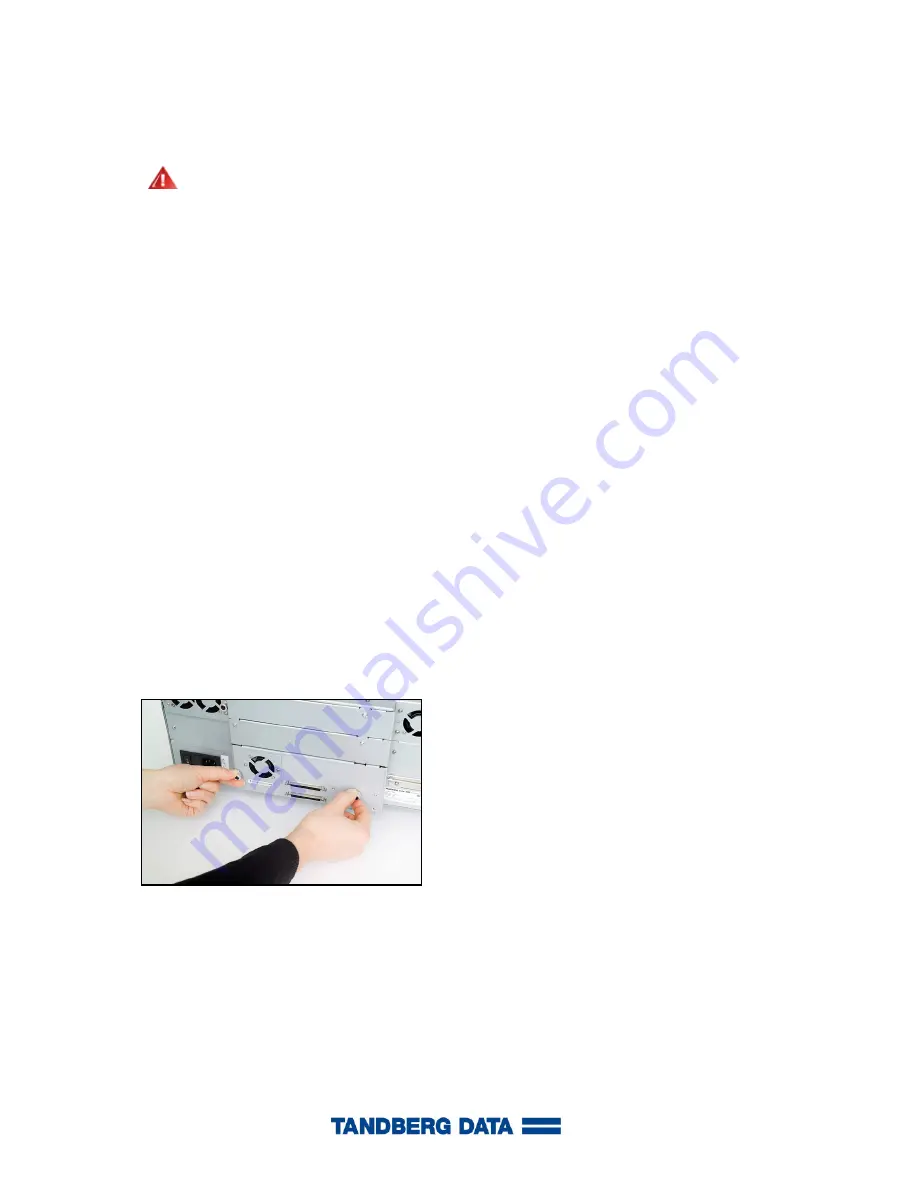
80
Adding, Removing and Replacing
8. Install cover plates over the empty drive bay. Use a screwdriver to mount the plates.
If you do not have enough cover plates, order replacements. It is important that all empty drive bays
have cover plates to keep unwanted materials out of the library.
Warning
Running the library without a cover plate can be dangerous.
Removing and Replacing a Tape Drive
These instructions explain how to remove a tape drive and replace it with a new one.
Required tools: None.
1. Prepare host applications for tape drive removal.
9. If there is a cartridge in the Drive, use the remote management interface to eject it.
2. Turn the library off using the switch(es) located at the back.
3. Disconnect the host interface cables from the tape drive that you want to remove.
4. From the back of the library, loosen the tape drive thumbscrews.
5. Remove the tape drive by gripping the thumbscrews and pulling the entire tape drive towards you.
6. Add the new tape drive to the empty drive bay. Using the guide rails on both the tape drive and
the tape drive bay, slowly slide the tape drive into the bay. The tape drive must be level in order to
slide it in smoothly.
7. Tighten the tape drive’s thumbscrews to secure the tape drive to the module. Tighten the
thumbscrews simultaneously. See Figure 41.
The thumbscrews must be aligned with the module’s screw holes. If they are not aligned, the tape
drive was not inserted correctly.
8. Connect the host interface cables to the tape drive. If the tape drive is a SCSI drive, and the drive
is the last device on the bus, you must also connect the SCSI terminator.
9. Power-on the library.
10. If necessary, update Drive firmware by following the instructions provided in the Updating
Firmware.
Figure 41. Adding or Removing a Tape Drive






























